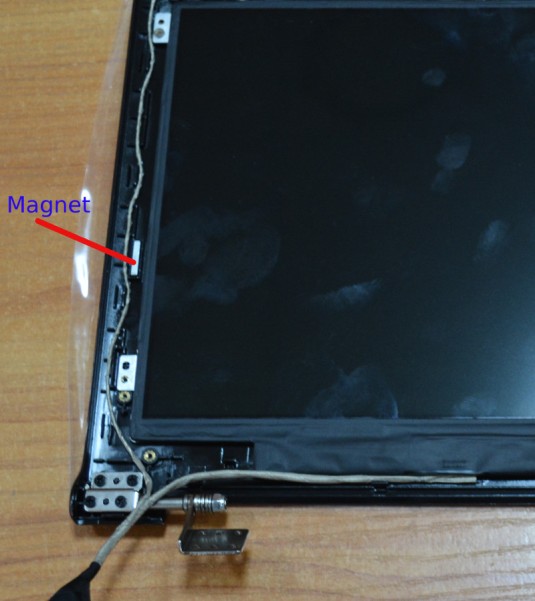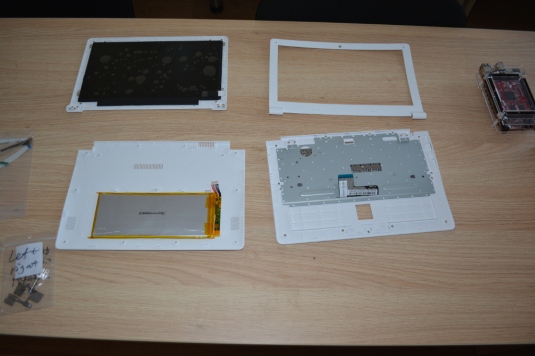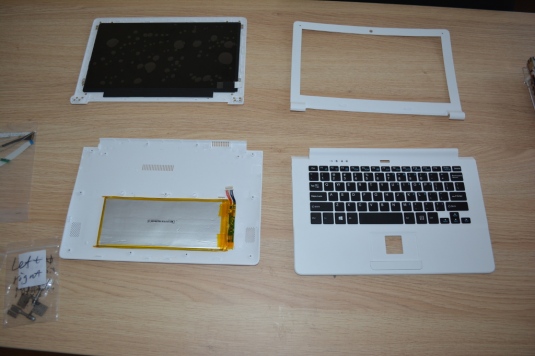
TERES-I DIY laptop first shipments started in September last year and we quickly sold the first initial production run. Immediately we start to get valuable feed back. Meantime the spare parts now are online and can be ordered.
FEEDBACK
Some of the feed back was quite pleasant like this one sent from Martin Krastev:
Здравейте,
Този път ви пиша не с въпроси по подръжката, а като потребител на Терес с
няколкоседмичен опит и впечатления ; )
Знам, че по идея Терес-А64 е бил замислен като хакерски ноутбук, но вече
седмици го ползвам като машина за разработка:
1. Освен проектите, по които работя, Терес сам си компилира и
компилаторите, които ползвам — 2-та ГБ памет наистина правят паралелното
компилиране възможно, та дори да е само -j2 или 3 (нещата, които компилирам са сравнително тежки, и по-голяма паралелност вече опира до суоп файла).
Така че голямо благодаря за ъпгрейда на паметта!
2. Въпреки нищожното охлаждане на чипа, Терес успва да държи по-голяма част от времето 1152МХц, което беше много приятна изненада за мен.
3. Клавиатурата се оказа доста ергономична, въпреки че в началото имах
опасения, че ще е малка.
4. Избора на чип от програмна гледна точка също се оказа удачен – някои
прозиводители на А53-базирани чипове орязват архитектурни фийчъри (демек – инструкции), но allwinner не са от тях (за изненада! ; ) Това ми позволява да не се тервожа, че код писан за по-глеми армове може да не тръгне на Терес.
5. Батерията носи добре на натоварване – дълги компилации не угасват по
средата! : ) А и шината за sd карти държи прилична скорост – напъно
сравнима с вътрешния флаш (при прилична карта, разбира се), така че и
проблемът с допълнително дисково пространство за големи проекти е решен.
Ами това е засега! Исках само да ви кажа, че с Терес сте в правилната
посока, тъй както сте създали напълно ползваем работен ноутбук за арм
програмисти, което си е постижение!
Поздрави,
Мартин
Google translate does satisfactory translation so I would not challenge my English translation skills 🙂
ISSUES
There were two issues we couldn’t catch during our tests and went with the first lot to our very impatient customers:
1. LCD backlight, some LCDs cause the backlight circuit inductor L11 to resonance at annoying audible high pitch harmonic frequency caused by the 300Hz PWM.

According to best Murphy’s law practices this problem didn’t show at the first few laptops we build and tested, but when we shipped the first lot some people complained back about it, so we had to find quick solution.
1.1. adding bigger capacitor 100 uF in parallel to C204 was solving completely the issue, but the boards were already produced and shipped to customers;
1.2. adding double adhesive tape which to press the L11 to the plastic cover solved the issue in most of the cases, if this was not enough sealing the L11 with superglue also stopped the noise, which was caused by L11 vibrations, needless to say this was quick dirty and messy fix
Инфорамция как да ъпгрейднем фърмуер на touchpad и бутони:
This issue was completely fixed with adding 100uF to second production lot
2. Touch panel buttons issue. We run out of GPIOs on the keyboard board so ADC was used to scan these two buttons. Again everything was OK when we tested the few laptops we assembled in house, but soon after the shipment people start complaining that sometimes they press left button but laptop register right button and etc, quite annoying!
2.1. the problem was partially fixed with changing the firmware, we posted new keyboard PCB firmware and instructions on GitHub but this not always solved the problem
2.2. the good fix solution was to decrease the resistor values on the PCB and use 1% precision resistors instead of 5% used initially
We do apologize to all customers who had experienced such problem, we guess they are not many, but if someone has still such issue after the firmware upgrade we will send free PCB3 replacement, just please send us your requests to support@olimex.com.
In the current KITS this issue is solved.
SOFTWARE
The initial version of the Linux software was not in best shape, the community helped us a lot and we are now on the third release. Special thanks to Alexey Korepanov for reporting lot of issues and fixes! He also made his own Gentoo distribution for TERES-I at GitHub!
PLASTICS
As you all know we suck at mechanical engineering and we had to find all plastic parts from Chinese laptop supplier. Some people asked about possible 3D designs of the laptop case but we are not capable to do this. So one of our customers Jeff Moe who obviously has mechanical engineering skills decided to re-design the plastics and make them as models in 3D printed format – he sends me pictures of his progress from time to time which I post here. So 3D makers be patient – there will be soon 3D printed designs and replacement parts for TERES!
EDIT: Jeff just noted me that the design is made by Brent MacKenzie from the Colorado Printing Project.





It looks the LCD back plastic he designed is even easier to assembly than the original one.

WHAT’s NEXT
I will post more in my next post about our progress in turning TERES-I DIY Laptop in portable lab with additonal FPGA board which makes from TERES component tester, Logic Analyzer and Digital Storage Oscilloscope with Sigrok.

































Recent Comments